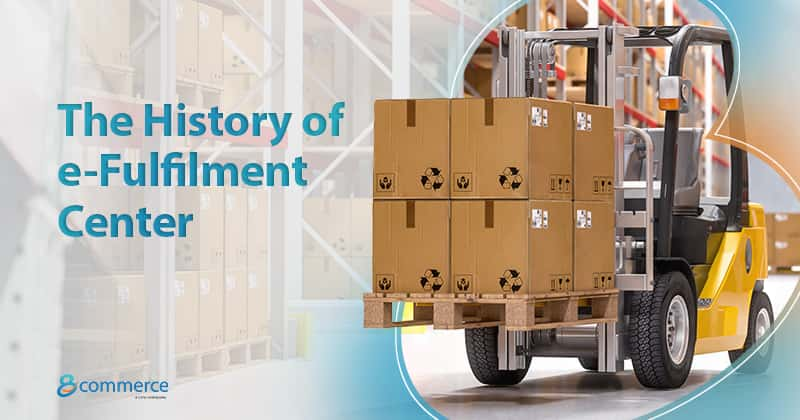In this article, we are going to learn about the interesting evolution from traditional warehouses to the modern e-fulfilment centers and the role they play as the logistics nerve center of E-Commerce.
Fulfillment centers have been revolutionizing the way business is done today. As almost every transaction is carried out digitally and online, E-Commerce and fulfillment centers will be at the heart of many businesses. To better understand the importance of fulfillment centers, and to show just how they came to such prominence, it is essential to understand the birth of E-Commerce and how that paved the way for what we have today.
The birth of fulfillment centers
Most people would pinpoint the start of E-Commerce as the moment when household names like Amazon and Google began emerging back in the late 90’s. However, did you know that E-Commerce had been gradually building years before? Actually, it has been around for just over 40 years.
E-Commerce began back in the early 1960’s with the integration of EDI (Electronic Data Interchange) and its implementation by several businesses. EDI laid the groundwork for B2B and E-Commerce by setting standards that allowed businesses to electronically share data with each other. The exchange of invoices, shipping orders and many other vital documents was a beacon for just how influential digital transactions could become. Over the next 20 years, technological advancements continued to revolutionize E-Commerce.
The English inventor and entrepreneur Michael Aldrich is credited for the invention of online shopping in 1979. However, it did not reach its full potential until Sir Tim Berners-Lee created the World Wide Web (WWW) and its accompanying browser in 1990. Since the invention of the WWW, online shopping has become a viable economic option and solution and is the advent for many of E-Commerce’s advances over recent years and showing no signs of slowing down.
The nature of E-Commerce is ever evolving, but one thing is for certain, it has been beneficial to the development of the global economy and it has resulted in the need for solutions to niche markets, resulting in the creation of fulfillment centers.
Fulfillment centers are merely the next evolutionary step in the growth and expansion of the supply-chain model. They are responsible for ensuring that orders are met on the tail end of the supply-chain. They are essentially in charge of warehousing, locating the items ordered, packaging packing them and shipping them to the desired address. Some fulfillment centers play a more central role if they are equipped to process payments (di 8commerce ga ada proses payment) and update the inventory of their respective clients, which is termed as E-Commerce fulfillment.
For large and small businesses that handle their own fulfillment, the advent of fulfilment centers has been a blessing. Now they can operate more cost efficiently and serve their customers better as well as focusing on building a strong brand image.
How 8Commerce came into being
As Indonesia’s E-Commerce industry takes off, 8Commerce has been riding the momentum. Founded by experienced logistics practitioners, we have an in-depth understanding the dynamics of evolving E-Commerce space. Our tech-driven solutions offer the flexibility and agility businesses need to scale and manage their inventories and orders in the most cost and time efficient manner.
We provide:
- Omnichannel solutions with integrated systems to augment sales
- The ability to quickly scale up during peaks for marketplace events
- Robust operations with greater than 99% uptime in the Indonesian market
Learn more about how we can become an integral part of your journey to success through this link.

